|
ANT GUESTS
1.1.
Platyarthrus schoblii
Budde-Lund, 1885
(Isopoda, Oniscidea)
This tiny (2-4
mm), whitish woodlouse, is known from the Azores, the north Mediterranean and
Black Sea coasts. It inhabits the nest of several species of ants in the
genera Formica, Lasius, Linepithema and Messor. It was found outside of that region, in Hungary, within the nests of
Lasius neglectus. For a summary update of its distribution and biology
see Tartally et al. (2004) at

Want to see it
alive? Click here:
(video:16”;
2.3 Mb.
View/download).
1.2. Platyarthrus hoffmannseggii Brandt,
1833 (Isopoda,
Oniscidea)
This woodlouse is widely distributed in Europe. It has been detected in nests of
L. neglectus in Belgium (Dekoninck et al. 2007), showing that this
ant is able to host also local woodlouse species. See the distinct aspect of
the two Platyarthrus species in the following image.
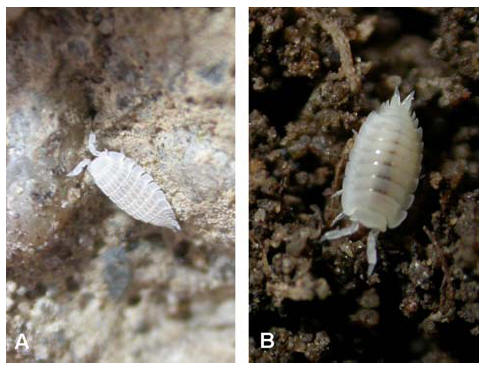
(Image from Tartally et al. 2004: A: P.
schoblii; B: P. hoffmannsseggii)
2.1. Clytra
laeviuscula Ratzeburg, 1837 (Chrysomelidae)
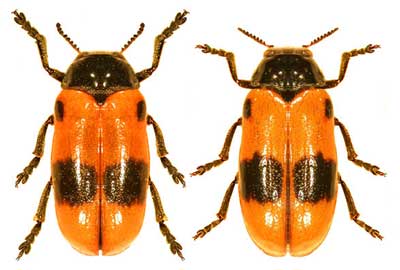
(Image from
http://culex.biol.uni.wroc.pl/cassidae/European%20Chrysomelidae/clytra%20laeviuscula.htm
)
A few larvae were
found inside the nest of Lasius neglectus at Sant Cugat (Barcelona,
Spain) nesting at the base of a poplar tree (Populus nigra), close to
the railway.
One male eclosed at the
laboratory.
Those larvae are supposed to eat ant eggs and larvae.
2.2. Amphotis
marginata (Fabricius, 1781) (Nitidulidae)
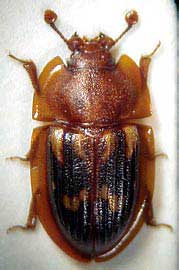
(Image from
www.zin.ru/Animalia/ Coleoptera/rus/ampmarhe.htm )
One beetle was recovered in the nest of Lasius neglectus at
an outpost of the extensive Seva (Barcelona, Spain) supercolony. It feeds by
forcing regurgitation in returning laden workers. If attacked, the beetle
crouches down and is protected by its peculiar cuticular flanges.
3.1. Myrmecophilus
(Myrmecophilus) acervorum Panzer, 1799 (Gryllidae)
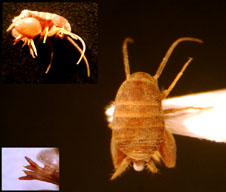
Myrmecophilus
crickets are to be found within the nests of many ant species. Female (inset:
ovipositor).
The small, blind
crickets, were found in the nest of L. neglectus from five
populations in Barcelona province: Bellaterra (one female, 2.iv.2003; one
male, 16.vi.2004), Seva (one male, one female, 30.iv.2003), Begues (one
juvenile, 20.x.2005), Badalona (27.ix.2005) and Matadepera (1
male, 3 females, 3 nymphs,
22.x.2009, ) (Espadaler
& Olmo, 2011). Another possible name to apply is M.
myrmecophilus but its status as a good species is still unsettled. Have
a look at those nervous, interesting crickets!
(video:
20”; 2.8 Mb.
View/download).
4.1.
Cyphoderus albinus Nicolet, 1842 (Cyphoderidae)
This springtail has been recently found
in nests of L. neglectus in Belgium (Dekoninck et al. 2007). The
species is a common occurrence within nests of European ants.
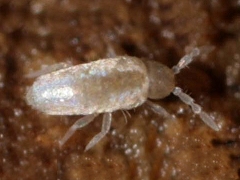
(Image
from
http://www.geocities.com/~fransjanssens/taxa/collembo.htm)
|